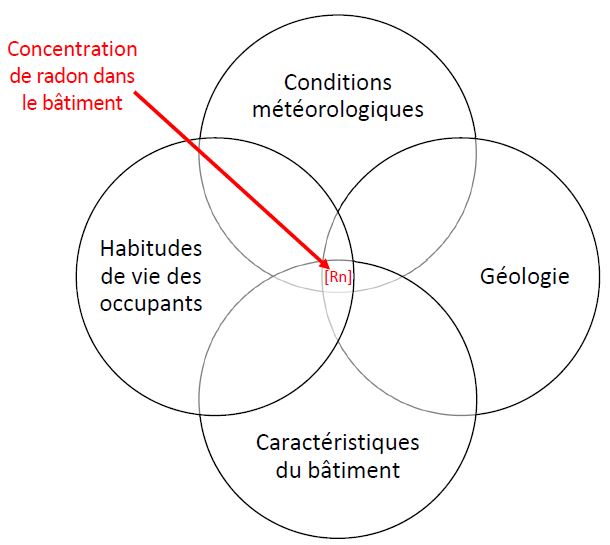Radon: Two Scientific Studies
Two recent scientific studies published by the TRANSFORM institute of the School of Engineering and Architecture of Fribourg (HEIA-FR) aim to understand the influence of weather conditions on indoor radon levels. Analyzing three buildings in Western Switzerland, the studies found outside air temperature to be the most important parameter. A naturally occurring radioactive gas commonly found in the built environment, radon is the only regulated indoor air pollutant in Switzerland.
Prolonged exposure to high levels of radon in the built environment causes an estimated 200 to 300 lung cancer fatalities in Switzerland every year. Radon is a natural element present everywhere in the Earth’s crust. Its soil-to-atmosphere dynamics are determined by several factors, including the geological setting, weather conditions, the characteristics of the built environment and the habits of building residents.
Using basic statistical analysis, two publications from the School of Engineering and Architecture of Fribourg show that outside air temperature is the parameter with the highest influence on indoor radon levels. The next factors in importance are precipitation and wind, which have an intermittent impact on concentration levels. The studies also reveal atmospheric pressure and outside air humidity to be less significant factors.
These results underscore the complexity and uniqueness of radon dynamics in each of the buildings studied. To reduce the risk of radon exposure in the population, the Federal Office of Public Health, which has a normative framework in the form of the Radiological Protection Ordinance (RPO, 2017), has issued a set of constructive recommendations applicable to both new and existing buildings. These two studies, however, highlight the need for increased awareness on the part of construction professionals about the often complex set of factors influencing radon dynamics in the built environment. A better understanding of radon dynamics is essential to implementing the right constructive solutions and to ensuring efficient radon protection for the population.
Read the studies:
Long-Term Impacts of Weather Conditions on Indoor Radon Concentration Measurements in Switzerland
Influence of some specific meteorological events on indoor radon dynamic in western Switzerland
